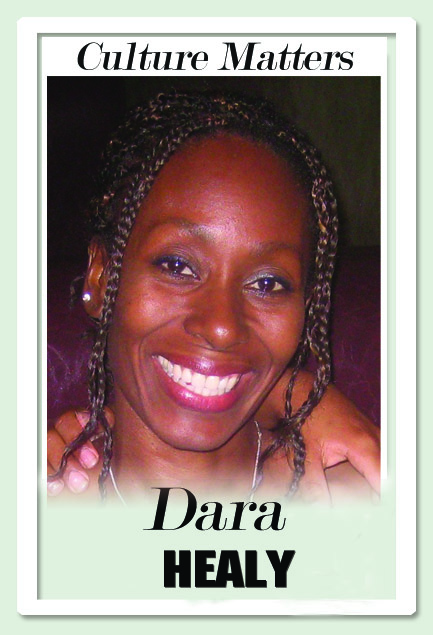Brushstrokes of sisterhood

Culture Matters
Say wey yuh want, there's not a place on earth better/These islands sweet/Say wey yuh want, I will love mih country forever/These islands sweet/Say wey yuh want, there's not a place on earth better/These islands sweet/You could say wey yuh want, I love mih country forever
– Sugar Island, Carl Jacobs featuring Roger George
IN JANUARY 1889, we officially became that phenomenon referred to today as a twin-island nation. “Tobago was duly united to Trinidad, with a single governor, judiciary and code of laws, with Tobago retaining its own financial board and its separate Treasury...” By Order in Council of 1898 “...the revenue, expenditure and debt of Tobago” were merged into what was called the united colony.
The British colonial rulers felt that we would be more efficient and, of course, profitable for them if we functioned as one entity. A decision that began as a practical solution by a foreign entity has evolved to a long-standing effort to realise the true essence of sisterhood. Our histories are different, as are our values and world views. True, we are becoming more used to each other. But as with all difficult sibling relationships, is being legal sisters enough?
The Tobago Gazette of 1886 documented that “Her Majesty’s Government” had already decided that “the Colony of Tobago should be annexed to and form part of the said Colony of Trinidad.”
Michel Jean Cazabon, the first of our painters to achieve global acclaim, did not live to see the coming together of Trinidad and Tobago. He left us with a very gentle, “elegant” view of life in Trinidad up to the time of his passing in 1888. Born to free coloured parents, that is, lighter-skinned Africans, he came from a family that was part of the social elite. Their wealth afforded Cazabon an enviable life, exhibiting his work in Paris and across Europe. However, beyond his gentle portraits, society was anything but calm.
Globally, inventions were transforming countries. In 1895, we marvelled at the introduction of electricity, the electric tram and the first automobiles on the streets of Port of Spain. Carnival of 1900 marked cultural innovations, for instance “the idea of combination into bands, each with a distinctive banner, bearing a title and motto. Kalinda songs were shaping into modern-day calypsoes and calypsonians were becoming entertainers.”
In Trinidad, wealthy landowners agitated for representative politics. There were the beginnings of a Pan African movement as citizens of African descent entered professions such as law and medicine. In fact, in 1900 Henry Sylvester Williams, a lawyer, would organise the first Pan African Conference in London.
There was also unrest in the cultural arena as the government and upper echelons continued efforts to suppress various forms of African and East Indian cultural expression. The Canboulay riots of 1881, the 1884 Hosay massacre and pro-Carnival riots in San Fernando and Point Fortin all drew attention to ongoing power conflicts in a society that was trying to find itself.
In 1886, Cazabon captured elements of East Indian family life with his sensitive brushstrokes, signalling perhaps that since the first ship arrived with indentured workers in 1845, the East Indian community was beginning to settle into this new space.
However, even with the euphoria of independence, the siblings still had issues to resolve. In 1957, Tobago did not support the People’s National Movement. In acknowledging that he had received the message, Dr Eric Williams seemingly commented that “Tobago had exchanged the neglect of UK imperialism for the neglect of Trinidad imperialism.”
In May 1976, not long before we became a republic, the Tapia House publication displayed a headline on its front page: “Tobago – Secession or Partnership.” The paper ran a story, several pages long, making recommendations for various spheres of operations in Tobago from the public sector to agriculture. According to its editors, “those who lack the vision argue that Tobago is too small to sustain its people, not seeing that the island has been made too small by the failure to activate its fullest potentials.”
In 2020, as we commemorate another year of being a republic, we acknowledge that not all family relationships are easy. If Cazabon was here, what portrait of us would he paint? It would be nice if his brushstrokes could be calm and elegant as always. But for that to happen, we must first determine the quality of the canvas that we give him to work with.
Happy Republic Day; say wey yuh want, this is home.
Dara E Healy is a performance artist, communications specialist and founder of the NGO, the Indigenous Creative Arts Network – ICAN

Comments
"Brushstrokes of sisterhood"